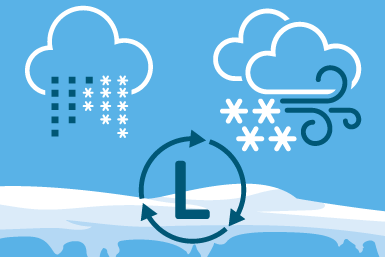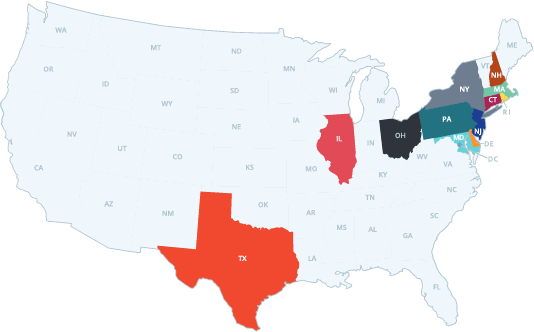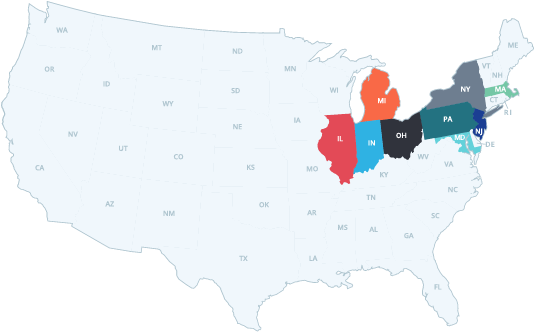Snow Storm Essentials Checklist
We’ve all heard the wisecracks about panicked shoppers overloading on bread and milk in the hours before a predicted winter storm, and maybe you’ve even seen it happen. But stocking up for a winter storm doesn't need to be a disorganized, last-minute frenzy -- it’s safe to buy most of the things on your winter food stock-up list now, while the weather is still good.
And if you live in an area that sees heavy snow most winters, getting an early start is a smart idea.

How to Stock a Pantry for Winter Weather
After heavy snowfall or blizzard conditions, you could find yourself snowed in for days. Getting cut off from your local grocery store could be made worse by a prolonged power outage, which would leave you with just a few hours to safely enjoy the remaining contents of your fridge.
But if you stock your pantry with filling, shelf-stable foods, you won’t go hungry while you’re waiting for the snow to be cleared. Here are some of the smartest essentials to purchase well in advance of an impending storm:
- Bottled water (at least one gallon per person per day, for at least three days)
- Canned goods, especially cozy, warming foods like soups and stews
- Snack foods like chips, crackers and cookies in sealed packages
- Cereal and granola
- Anything jarred, from jellies to pickles to meats
- Canned tuna and salmon
- Peanut butter and other shelf-stable nut butters, a vegan-friendly source of protein
- Dried pasta and jarred sauce
- Wax-sealed hard cheeses
- Salted butter, which lasts longer at room temperature than unsalted butter
- Dried fruit
- Nuts
- Jerky
- Energy bars
- Shelf-stable juice
- Coffee, tea and hot cocoa mix (and maybe some marshmallows)
- Extra paper products like toilet paper and paper towels
Last-Minute Snow Storm Food List
You’ll do just fine for a few days with those pantry staples alone, but if you have time to get to the grocery store before the big storm hits, it’s nice to have these on hand:
- Fresh bread
- Eggs
- Fresh fruit and vegetables
- Ingredients for cookies or some other baking project to keep the house warm and cozy
Winter Emergency Essentials
Staying safe throughout a winter weather event involves more than filling your belly. As long as you’re stocking up on things, make sure your emergency preparedness kit is topped off with the following:
- Flashlights
- Batteries
- Battery operated radio
- Back-up energy sources like portable power banks and solar chargers
- Can opener
- First aid kit
- Thermal emergency blankets
- A propane or kerosene space heater rated for indoor use
Cover All the Bases
Some members of your household may have unique needs, so make sure they’re factored into your shopping list as well:
- At least a one-week supply of prescription medication and medical supplies
- Pet food and medicine
- Baby food and formula
- Diapers
Prepare Your Home for a Winter Storm
If you’re worried about being snowed-in without power for a day or more, there are a few other areas where you might stock up:
Get Ready for Grilling
No gas stove? No problem, if you have an outdoor grill. Just be sure to get necessities like charcoal, matches, newspapers and lighter fluid, or a full tank of propane for a gas grill. You can also use a camping stove if you have a supply of the appropriate fuel. A teakettle and French press will come in handy if you end up making your morning coffee by the heat of the fire.
Maintain Your Generator
If you have an emergency backup generator, you’ll want to top off your supply of fuel and replace and old fuel that may be stale. Make sure the generator is up to date on maintenance like oil changes, filters and spark plugs, and ensure that any extension cords you’re using are undamaged and rated for generator use. If you want to run your generator through your main electrical panel but haven’t had an electrician install a transfer switch, get this service done before you have a blizzard bearing down.
Ice Down the Icebox
You can help your refrigerator and freezer maintain cold temperatures during a power outage by filling empty space with containers of water -- or better yet, ice. If outdoor temperatures are below freezing, you can freeze several large containers of water at once and keep them cycling in and out of your fridge and freezer, just in case.
Another option is to use dry ice, which maintains a temperature of -109 degrees Fahrenheit. If you can obtain dry ice locally right before or after a power outage, you can use it to save your perishables as long as you replace it as needed. The FDA recommends 50 pounds of dry ice to keep a fully stocked 18-foot cubic freezer frozen for two days; to fine-tune the temperature of your fridge and freezer with dry ice, it will help to have a couple of refrigerator thermometers.
Top Off the Gas Tank
While you’re out gathering all these supplies, don’t forget to fill up your car’s gas tank. Winter storms could interrupt fuel deliveries in your area.
Related Articles

What's the Difference Between a Snowstorm and a Blizzard?
Learn the difference between a blizzard, snowstorm and other winter weather events.

Emergency Supplies & Go Bag Checklists for a Storm
When a major storm arrives in your town, you need to be prepared for serious disruptions to your normal day-to-day activities.

Safety Tips for a Winter Weather Emergency: How to Prepare
Let us help your family create an emergency preparedness plan for any possible winter weather emergency.
 CANADA
CANADA USA
USA









